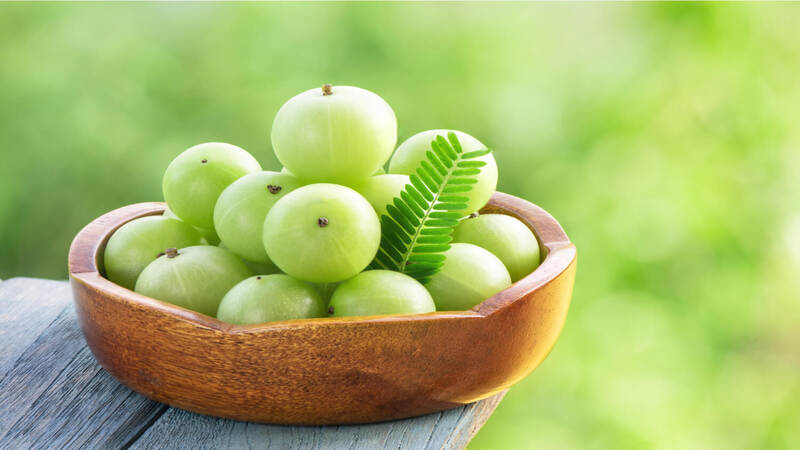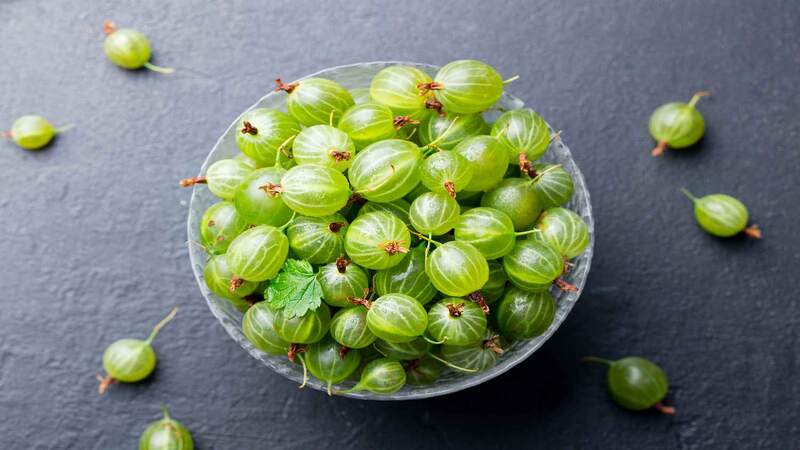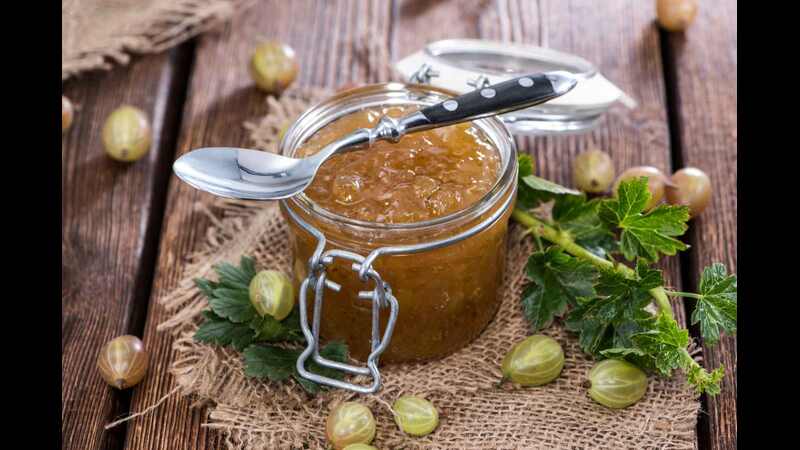
Babies need proper nourishment through a balanced diet which comprises minerals, nutrients, vitamins etc. Once the baby is ready for solids, parents often wonder about what foods they can safely give to their babies to provide this nutritional balance. They leave no stone unturned in offering adequate nourishment for the baby. Amla or gooseberry is one of the foods that are nutrient-dense and can be given to your little one once they are old enough. Gooseberries for babies offer immense immunity and help in fighting infections due to the high vitamin C levels.
Amla is a fruit which is plentiful in the autumn season. This fruit helps the baby with overall development and is quite beneficial for all ages. This fruit is used in the preparation of various ayurvedic medicines due to its high nutritional quantity. Amlas have a high acidic content in them, so it is advisable to only offer the babies after they are a year old. This article details the health benefits of gooseberries and the different ways in which you can introduce it to your little one.
Are Gooseberries(Amla) Good For Babies?
Gooseberries are a great source of vitamin C. They are rich in nutrients such as phosphorus, iron, vitamin B, zinc etc. For these reasons, amla is good for babies. It is the main ingredient in making chawanprash, which is the Indian jam for kids in winter to build immunity. Due to the high nutritional content, amla has a great usage for preparing medicines.
Nutritional Value of Gooseberries
Indian gooseberries, even known as amla is spherical shape fruit which is light green in color. It has high Vitamin C content antioxidants as well. This fruit is not sweet but acidic and bitter in nature, yet its storage and preservation are possible in various ways. The table below depicts the nutritional value of amla.
| Nutrients | Value |
| Energy | 44 Kcal |
| Carbohydrate | 10.18 g |
| Cholesterol | 0 mg |
| Protein | 0.88 g |
| Dietary Fiber | 4.3 g |
| Folates | 6 mcg |
| Niacin | 0.300 mg |
| Riboflavin | 0.030 mg |
| Thiamine | 0.040 mg |
| Vitamin A | 290 IU |
| Vitamin C | 27.7 mg |
| Sodium | 1 mg |
| Potassium | 198 mg |
| Calcium | 25 mg |
| Copper | 0.070 mg |
| Iron | 0.31 mg |
| Magnesium | 10 mg |
| Manganese | 0.144 mg |
| Phosphorus | 27 mg |
| Zinc | 0.12 mg |
(Source)
Amazing Top 5 Health Benefits of Gooseberries For Babies

Gooseberries have the highest Vitamin C content if compared to all other sources. They have good water content as well and have other nutrients like minerals and vitamins such as iron, carotene, phosphorus, calcium, vitamin B etc. fibre, carbohydrates etc. This high nutritional content in Amla has several health benefits for babies and the top five health benefits are as under:
1. Helps Fight Infections
Vitamin C present in Amla helps in boosting the body’s way of offering protection against infections like cold and flu especially in changing seasons. If the tangy flavor of Vitamin C gets added to the baby’s diet, it helps in improving the resistance of the body.
2. Helps Build Strong Immunity
Gooseberries have antibacterial features that help in developing a stronger immunity system, making the baby healthy and strong as they grow.
[Read : How to Increase Immunity in Babies?]
3. Relieves Constipation Issues
Constipation is common among babies, especially once they start solids. Amla has good fibre content and due to its laxative nature, it helps in proper bowel movements and aids digestion. Amla, if taken on a regular basis, regulates the intestinal and bowel movements.
4. Boosts the Appetite
Most of the babies are pricky eaters and not willing to eat. Including a few gooseberries with honey and butter increases the appetite of the baby. It even helps with the weight gain in babies.
5. Aids in Brain Development
Amla helps in absorbing the food from all other nutrients, is good for the brain cells and even helps with improving memory. It is very good for babies as it helps in recalling and retention as well.
How Can You Introduce Gooseberries to Your Baby?

Amla must be included in the baby’s diet and there are plentiful ways of doing so. This fruit is bitter, so the baby takes time in developing a taste for it. Once your little one gets habitual to its consumption, the health of the child will show drastic improvement as well. The succulent fruits are freshly available in winter or autumn season and the ones that have no blemishes are the best to be given.
Due to the bitter and sour taste, it is a good idea to cook or steam properly before the baby gets fed. Start with a small quantity first, and once your baby gets used to the taste and doesn’t exhibit any reactions, you can slowly start increasing the amount of fruit. It is advisable to follow a 3- day exercise to watch out for any allergy or additional symptoms.
If symptoms like nausea, itching, cramps, swelling, or rashes are seen, you must stop giving the fruit immediately and take your baby to the pediatrician.
Amla is a superfood for the baby and has a significant impact on the wellness of the child. It is a great choice for the baby for various reasons. Here are a few interesting and safe ways in which you can give amla to your little one.
[Read : The 3-Day Wait Rule For Babies To Introduce Solids]
Top 2 Healthy and Tasty Gooseberries Recipes For Babies

Here are a few ways in which you can feed amla to your little one.
1. Gooseberry Juice
Juice is an excellent way to give gooseberries to your little one. The process involves washing the gooseberries well, pressure cooking them, and deseeding and chopping and blending with water. You can strain this juice, add honey to it. Your gooseberry juice is ready. You can feed this juice to your baby with a spoon. While introducing the juice, the quantity should not be too much, as it can lead to stomach upset. Once your baby gets used to the taste, you can slowly increase the quantity.
2. Gooseberry Jam
Jam is another excellent way of adding gooseberries to your baby’s diet. You can serve this as a side with idli, dosa, chapati and even bread. Pressure cook the gooseberries after washing well. Blend to a paste form and cook the puree of gooseberry in a pan, adding cardamom, jaggery/sugar, cinnamon, and lemon juice to it.
Keep stirring on medium flame and let the mixture bubble. Once you achieve a jam-like consistency, cool it and amla jam is ready. It is best for babies of one year or above.
It is also a normal practice to give Chawanprash or Indian jam to babies in winter for better immunity and strength and this contains gooseberries as one of the key ingredients. Amla murabba or pickle are also alternatives to include amla in the baby’s diet. Giving amla on a regular basis helps in nourishing the baby and offering strength and good health.
Gooseberries for babies is an extremely beneficial fruit with its many health and medicinal properties. Remember to introduce this fruit only once the baby is one year old.
FAQ’s
1. Is the Juice of Indian Gooseberry Good For Babies?
The juice of amla is the best way to introduce gooseberry to the baby’s diet. It has minerals, vitamins and antioxidants and is an ideal source of Vitamin C as well.
2. Can we Give Gooseberries to Babies?
Gooseberries can be given to babies who are one year old. Introducing the fruit earlier can cause stomach issues due to its high acidic content.
3. What Are the Benefits of Eating Gooseberries For Babies?
Amla has many benefits for babies such as improving immunity, keeping illnesses at bay, contributing to brain growth and helping with the overall development of the baby.
Read Also: Chikoo (Sapota) For Babies – When to Introduce, Benefits And Precautions
